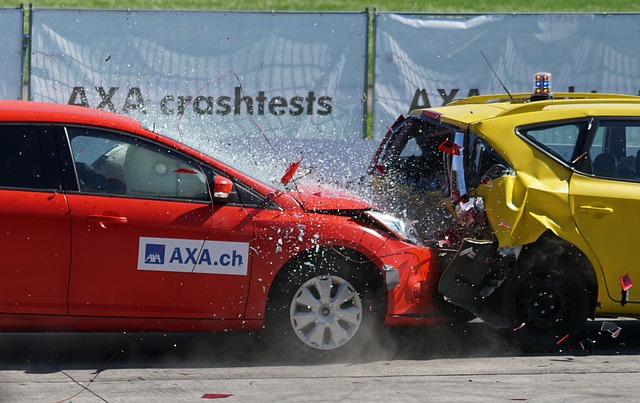For law professionals specializing in personal injury cases, understanding the detailed process of a car accident investigation is essential. Accurate and thorough investigations lay the foundation for legal claims and can significantly affect the outcome of a case.
In this article, we will peel back the layers of car accident probes to reveal the techniques, technology, and tenacity required to uncover the truth. We will also address the pivotal role of these investigations in delivering justice and ensuring fair compensation for victims of automobile collisions.
Investigative Process
An effective car accident investigation is akin to reconstructing a complex puzzle, one where each piece represents a different aspect of the incident. The process is meticulous, involving several critical steps.
Step 1: Initial Inquiry and Scene Preservation
The investigation begins with the first report of the accident. Swift action is crucial to secure and document the scene before evidence is lost or corrupted. This includes taking measurements, photographs, and notes on the initial condition of the vehicles and any visible skid marks or debris patterns.
Step 2: Evidence Collection and Analysis
Investigators meticulously gather evidence, which ranges from physical elements like the vehicles themselves and the environment in which they collided, to less tangible aspects such as medical records and weather reports. This evidence is then subjected to detailed analysis to derive facts that can inform the legal process. In Magna, auto accident lawyers explain that this step is critical in determining fault and establishing causation.
Step 3: Reconstruction and Hypothesis Testing
Utilizing the collected evidence, investigators reconstruct the sequence of events that led to the accident. This often involves the use of sophisticated tools and simulations to test various theories and understand how the factors at play may have interacted to cause the collision.
Key Elements Investigated
In a car accident investigation, no stone is left unturned. Key elements that receive the highest scrutiny include:
Road Conditions
The condition of the road at the time and place of the accident can have a significant impact on causation. Investigating authorities look for potholes, obscured signs, inadequate lighting, and other issues that may have contributed to the incident.
Vehicle Damage
Damage analysis can suggest the severity of the collision and the nature of the forces at play. Comparing the damage patterns to the accounts of involved parties can help corroborate or challenge reported details.
Witness Testimony
The value of eyewitness testimony can be significant or limited, depending on the quality and consistency of the accounts. Investigators work to validate and cross-reference these testimonies to build a more complete picture of the accident.
Technology and Tools Used
Modern car accident investigations are increasingly reliant on cutting-edge technology and specialized tools.
Drones
Unmanned aerial vehicles provide a bird’s-eye view of the scene, aiding in the collection of precise and comprehensive data that might not be accessible from the ground.
3D Scanners
These devices capture detailed images of the accident scene, allowing for virtual reconstructions and measurements with an extremely high degree of accuracy.
Data Analytics
Sophisticated software crunches large volumes of data to detect patterns, anomalies, and correlations that may be imperceptible to the human eye. This powerful tool can be particularly valuable in cases involving numerous vehicles or complex traffic patterns.
Challenges and Solutions
The work of a car accident investigator is not without its challenges. Some of the most common obstacles include:
Inconsistent or Incomplete Data
Not all accidents occur in easy-to-document locations, and not all evidence is readily available. To address this, investigators develop creative strategies and leverage new types of evidence.
Reluctant or Hostile Witnesses
Not all parties are willing to cooperate. Investigators must rely on their skills of persuasion and, if necessary, legal means to obtain the testimony and information required.
Technological Limitations
While technology can greatly enhance investigations, it is not a panacea. Understanding the tools’ capabilities and knowing when and how to use them effectively is essential for overcoming these limitations.
The Future of Car Accident Investigations
As technology continues to evolve, the future of car accident investigations looks remarkably different from its past. We can anticipate:
Increased Role of Artificial Intelligence
AI and machine learning algorithms will likely play a more significant role in processing and analyzing vast amounts of data, reducing the investigator’s workload and providing new insights.
Augmented Reality
This emerging technology holds the potential to blend digital information with the real world, enabling 3D reconstructions to occur on-site.
Integration with Autonomous Vehicles
The rise of autonomous vehicles will require new investigative procedures to account for the technology’s unique distortions of traditional traffic patterns and incident causations.
Conclusion
The effort that goes into a car accident investigation is immense, and the impact it can have on the lives of those affected by the incident is immeasurable. For law professionals, staying abreast of these investigatory practices can mean the difference between a favorable legal outcome and a significant challenge in court. It is a world of constant innovation and adaptation, where the pursuit of truth takes center stage – no matter how complex or challenging the circumstances may be. Stay informed, stay engaged, and always keep the pursuit of justice at the forefront. The more knowledgeable we are about the investigative process, the better equipped we will be to serve our clients and bring their cases to a fair and just resolution.
Also read:
6 Things You Need to Know Before Selling Your Car
